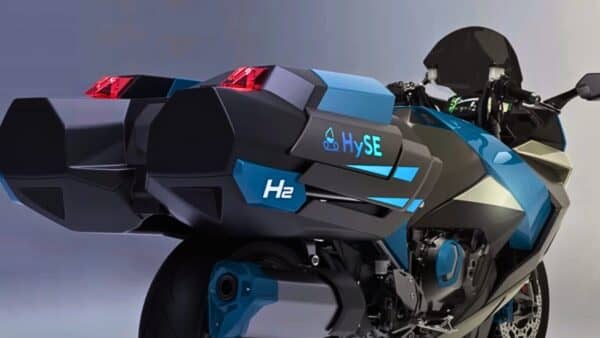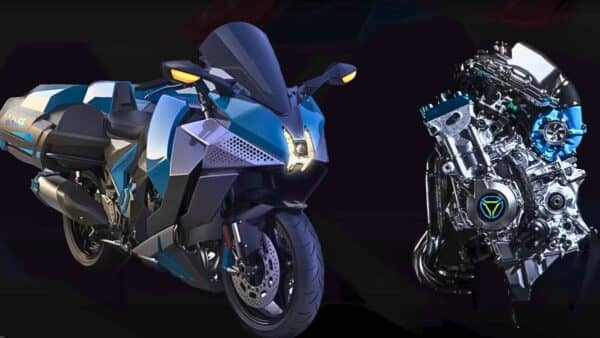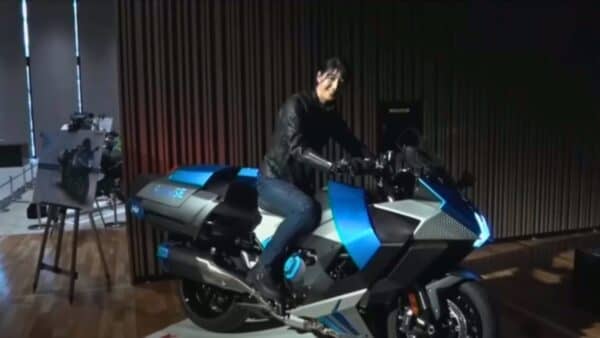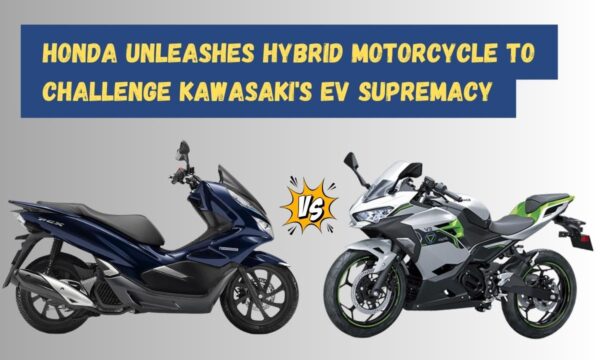In today’s modern world where environmental sustainability is not just a trend but a need, the automotive industry is undergoing a revolutionary shift.
Kawasaki’s unveiling of the “Ninja H2 HySE,” its first hydrogen-powered motorcycle marks an important moment in this transformation.

This innovation is a response to the urgent call for carbon neutrality and a testament to the potential of hydrogen as a clean, efficient alternative to fossil fuels.
Hydrogen fuel, with its high energy content and zero-emission at the point of use, offers a compelling solution to the challenges posed by climate change.
A few weeks ago Suzuki also showcased their hydrogen-fueled bikes, signaling a broader industry movement towards this green technology.

Kawasaki, a brand synonymous with high-performance motorcycles, has taken a significant step into the world of sustainable transportation with its introduction of the “Ninja H2 HySE,” the company’s first hydrogen-powered motorcycle.
The motorcycle is based on Kawasaki’s existing H2 model. It will feature a supercharged inline-four engine with a 999cc capacity, similar to a typical fossil-fuel engine but adapted for hydrogen use.
The bike’s design includes panniers at the rear, specifically designed to hold extra hydrogen canisters, that showcase Kawasaki’s dedication to practical and functional design in the realm of alternative fuel sources.
Related: Ducati Diavel For Bentley – World’s Most Expensive Bike
Moving away from Kawasaki’s traditional green color palette, the H2 HySE sports a charcoal and blue livery, with an “H”-shaped headlight to emphasize its hydrogen-powered nature and the HySE consortium.
This design choice not only signifies a departure from the norm but also symbolizes a cleaner and more serene future envisioned with hydrogen power.
Despite the impressive features of the Ninja H2 HySE, there are challenges to overcome, particularly in the development of a sustainable hydrogen fueling infrastructure.

Kawasaki’s initiative is a step towards a hydrogen-powered future, but it highlights the need for further investment and innovation in this area.
They are also exploring its application in aeronautics, with a six-cylinder engine designed for aviation, demonstrating the versatile potential of hydrogen technology across different transportation modes.
The bike is currently a test prototype, with its commercial release scheduled for early 2030, it represents a significant step forward in the evolution of green transportation solutions.
Source: Webbikeworld | Cycleworld | Fuelcellsworks

Ahtsham Younas is a passionate blogger and content writer. He loves to ride motorcycles and learn the mechanical process behind the motorcycles.
He has been writing articles in the motorcycle industry since 2019 and has learned many things about motorbike niches.


